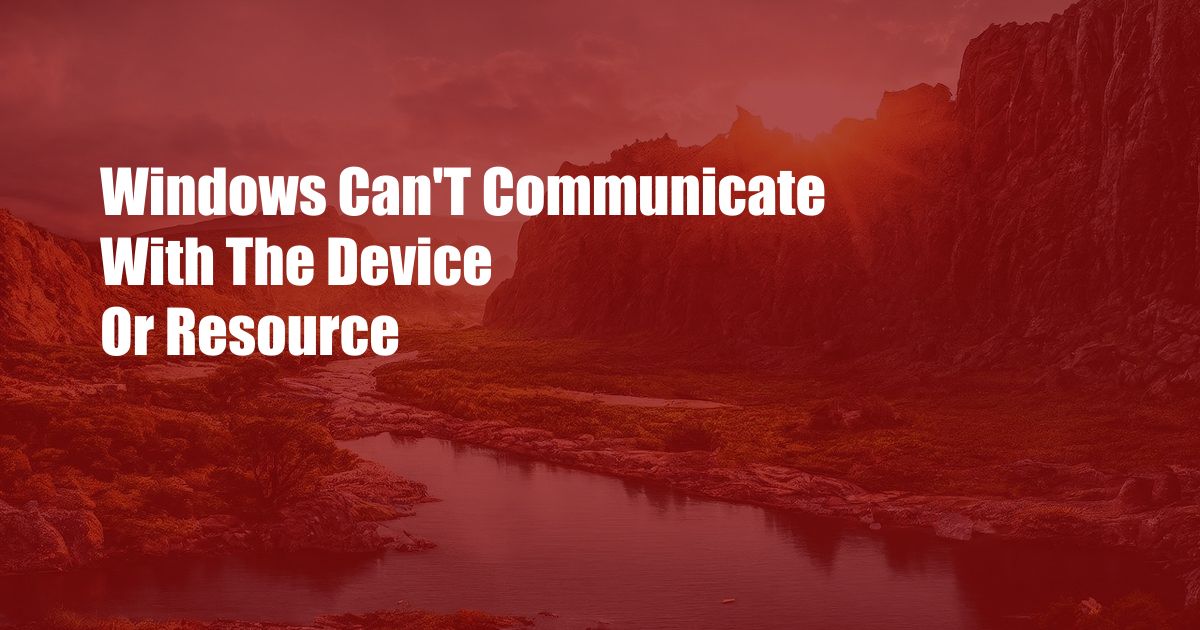
Windows Can’t Communicate with the Device or Resource
I recently encountered an issue where my Windows computer couldn’t communicate with a specific device. It was a frustrating experience, as I couldn’t access the device’s files or use it for any purpose. After some troubleshooting, I discovered that the issue was caused by a driver problem. Once I updated the driver, the problem was resolved, and I could access the device without any issues.
This experience made me realize how important it is to have up-to-date drivers for your devices. Drivers are essential software components that allow your computer to communicate with hardware devices. Without proper drivers, your devices may not work correctly or may not be recognized by your computer at all. If you’re experiencing problems with a device, one of the first things you should do is check if the drivers are up to date.
Understanding Driver Errors
Driver errors can occur for various reasons, including:
- Outdated drivers: As new operating systems and hardware are released, driver updates are often required to ensure compatibility.
- Corrupted drivers: Drivers can become corrupted due to malware, system crashes, or other software issues.
- Hardware problems: Sometimes, driver errors can indicate underlying hardware issues that need to be addressed.
Troubleshooting Driver Errors
If you’re experiencing driver errors, there are a few steps you can take to troubleshoot the issue:
- Check Device Manager: Open Device Manager (devmgmt.msc) to view a list of all hardware devices connected to your computer. Look for any devices with yellow exclamation marks or red X symbols, which indicate driver problems.
- Update Drivers: If you find any devices with driver issues, right-click on the device and select “Update Driver.” Windows will automatically search for and install the latest drivers.
- Manually Install Drivers: If Windows can’t find the latest drivers, you can manually download and install them from the manufacturer’s website.
- Rollback Drivers: In some cases, updating drivers can cause problems. If you experience issues after updating a driver, you can try rolling back to the previous version by right-clicking on the device in Device Manager and selecting “Properties” > “Driver” > “Roll Back Driver.”
- Contact Support: If you’re unable to resolve the issue yourself, you can contact the device manufacturer or Microsoft support for assistance.
By following these steps, you can troubleshoot driver errors and ensure that your devices are working properly. It’s important to keep your drivers up to date to avoid potential issues and improve the overall performance of your computer.
Conclusion
Windows errors can occur due to a variety of reasons, including driver problems. By understanding the causes of driver errors and following the troubleshooting steps outlined above, you can resolve these issues and ensure that your devices are communicating properly with your computer. If you encounter any difficulties, don’t hesitate to seek assistance from the device manufacturer or Microsoft support.
If you found this article helpful, please share it with others who may be experiencing similar issues. Let us know if you have any questions or comments below.
